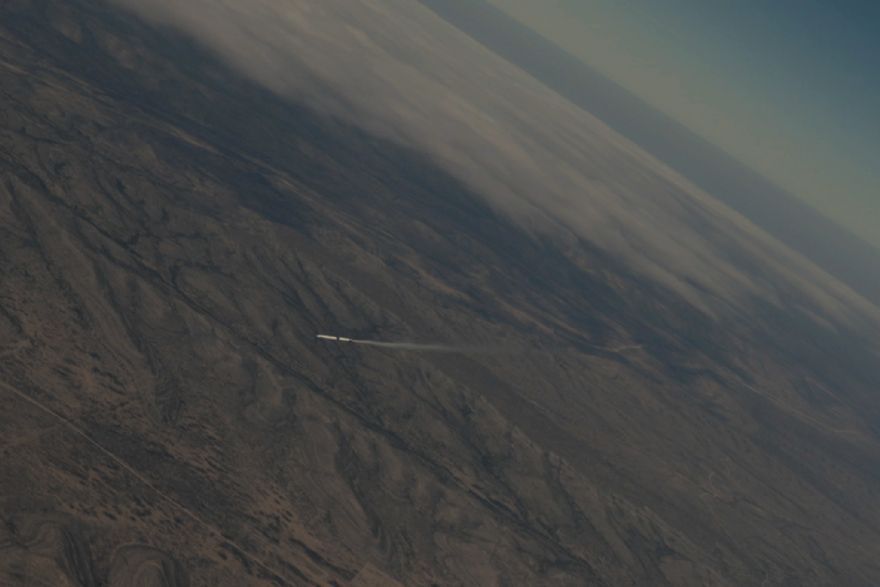 Photo: Venus Aerospace
Photo: Venus AerospaceUS-based
Venus Aerospace, a start-up pioneering the future of high-speed flight, successfully completed the first US test flight of a Rotating Detonation Rocket Engine (RDRE) last week, a next-generation rocket engine. This milestone represents a breakthrough for aerospace, with a design ultimately aimed at enabling vehicles to travel four- to six-times the speed of sound taking off from a conventional runway.
Theorised since the 1980s, a high-thrust RDRE capable of practical application has never been flown in the USA — and possibly anywhere else in the world. This test represented the first-ever flight of a US-developed engine of its kind, proving that Venus's proprietary RDRE — an affordable, compact propulsion system delivering unprecedented efficiency and thrust — can operate in real-world conditions.
Sassie Duggleby, CEO and co-founder of Venus Aerospace, said: “This is the moment we have been working toward for five years. We have proven that this technology works — not just in simulations or the lab, but in the air. With this milestone, we are one step closer to making high-speed flight accessible, affordable, and sustainable.”
The demonstration took place at Spaceport America in New Mexico, following a night of heavy winds. On the first flight attempt, Venus’s RDRE successfully launched and flew its engine, validating performance and system integrity under flight conditions.
Milestone moment for hypersonicsScott McLaughlin, Spaceport America’s executive director, said: “Spaceport America was created to make space history, and Venus Aerospace delivered a milestone moment for hypersonics today. Getting a rotating detonation rocket engine to the launch pad is an achievement few thought possible in such a short time. We are thrilled to host innovators like Venus Aerospace, whose breakthroughs are redefining what is possible in spaceflight.”
Compared to traditional rocket engines, RDREs offer improved efficiency and compactness, making them particularly suited for advanced aerospace applications. Venus's engine is designed to be affordable and scalable for both defense and commercial systems, including future vehicles that could fly passengers from Los Angeles to Tokyo in under 2hr.
Dr Rodney Bowersox, associate dean for research and professor of aerospace engineering, Texas A&M University, said: “This milestone is a testament to what is possible when engineering rigour meets entrepreneurial urgency. Rotating detonation rocket engines have been a scientific curiosity for decades. Venus is showing the world that they are not just academically interesting — they are buildable, testable, and operational under real-world conditions. This is how aerospace innovation should look.”
Venus’s RDRE is also engineered to work with the company's exclusive VDR2 air-breathing detonation ramjet. This pairing enables aircraft to take off from a runway and transition to speeds exceeding Mach 6, maintaining hypersonic cruise without the need for rocket boosters. Venus is planning full-scale propulsion testing and vehicle integration of this system, moving toward their ultimate goal — the Stargazer M4, a Mach 4 re-usable passenger aircraft.
From take off to sustained hypersonic flightAndrew Duggleby, co-founder and chief technology officer, said: “This milestone proves our engine works outside the lab, under real flight conditions. Rotating detonation has been a long-sought gain in performance. Venus’ RDRE solved the last but critical steps to harness the theoretical benefits of pressure gain combustion. We have built an engine that not only runs, but runs reliably and efficiently — and that is what makes it scalable. This is the foundation we need that, combined with a ramjet, completes the system from take-off to sustained hypersonic flight.”
The global hypersonics market is projected to surpass $12 billion by 2030, driven by demand across defence, aerospace, and commercial aviation sectors. With this successful demonstration, Venus Aerospace is positioned as the world leader of affordable hypersonic systems. With further tests and deliveries to government partners on the horizon, Venus Aerospace is striving to restore US leadership in high-speed flight.
Phillip Sarofim, founding partner at
Trousdale Ventures, said: “Venus Aerospace is proving that visionary engineering teams can still build world-changing technology on startup timelines. We are proud to back founders who are making history and showing the world how ‘hard tech’ gets built.”
Thomas d'Halluin, managing partner at Airbus Ventures, concluded: “With this flight test, Venus Aerospace is transforming a decades-old engineering challenge into an operational reality. Getting a rotating detonation engine integrated, launch-ready, and validated under real conditions is no small feat. Venus has shown an extraordinary ability to translate deep technical insight into hardware progress, and we are proud to support its bold approach in its attempt to unlock the hypersonic economy and forge the future of propulsion.”